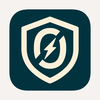Introduction
In today's digital world, small and medium sized businesses face the same cybersecurity threats as large enterprises, but often without the same resources. That's why I have built my own security first workflow, designed to protect every layer of my business operations using accessible, ethical, and high-standard tools.
This article breaks down how I do it, why it works, and what trade-offs are worth making to achieve real security.
Start with Personal Security - Protons Eco System
For personal and foundational business security, I use Proton's suite of tools:
- Proton VPN - Encrypts internet traffic and hides IP addresses.
- Proton Mail - End to End encrypted email communication.
- Proton Pass - Secure password management.
- Proton Drive - Encrypted Cloud Storage
- Proton Wallet - For secure digital transactions. These tools are built with end-to-end-encryption (E2EE) meaning only the sender and receiver can access the data, not even proton themselves can.
What is End-to-End Encryption (E2EE)
E2EE ensures that data is encrypted on your device and only decrypted on the recipients device. This means: no-one can access or see your decrypted data, even if a hacker gets into proton servers you data is still secure.
However, most cloud services only encrypt in transit and at rest, not end-to-end. This means the provider can technically access your files, or worse they can be exposed during a breach.
Secure File Storage - Local First, Then Sync
To maximize E2EE, I avoid working directly in the cloud. Instead:
- I create and edit files locally using trusted software:
- Word, Excel, PowerPoint, Access
- I store files locally on my device.
- I use the Proton Drive Desktop Client to sync files to the cloud
This ensures that:
- Files are encrypted before they ever leave my device.
- Even if Proton's servers were compromised, the files would remain unreadable to attackers.
- Only I hold the decryption keys.
The One Weak Link: Your Device
The only real vulnerability in this setup is your own device. If your computer is compromised, attackers could access decrypted files before they're encrypted and synced.
The Solution: Air-Gaped Systems for Sensitive Data
For highly sensitive or high-risk data, I use an air-gaped system, a computer that:
- Has no internet connection.
- Is physically isolated from other devices.
- Runs local software only.
- Stores data in offline databases.
This method is 99.9% secure because it eliminates remote attack vectors. The trade-off? Limited access and convenience. But for critical data, it's worth it.
Security vs. Convenience
This setup isn't friction-less. It requires discipline, planning and a willingness to sacrifice convenience for protection. But until my organization develops a more seamless solution, this hybrid approach is the most secure option available.
What's Next
As I build out my non-profit organization, one of our core objectives is to create tools that make default-secure systems accessible to everyone. Without compromising usability. Until then, this setup is my blueprint for ethical, resilient and practical cyber security.


Top comments (0)